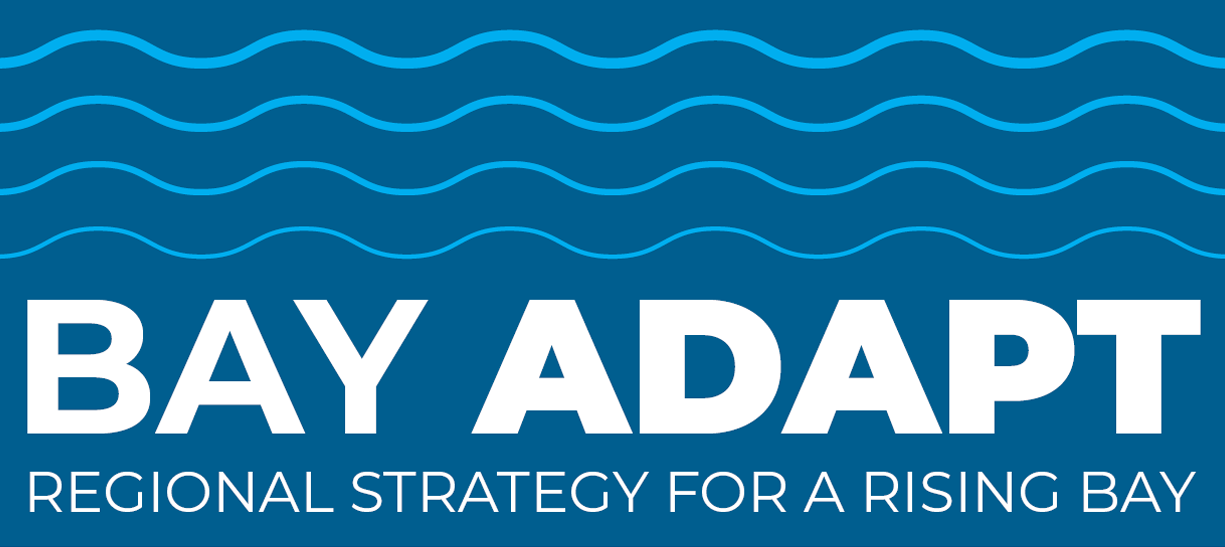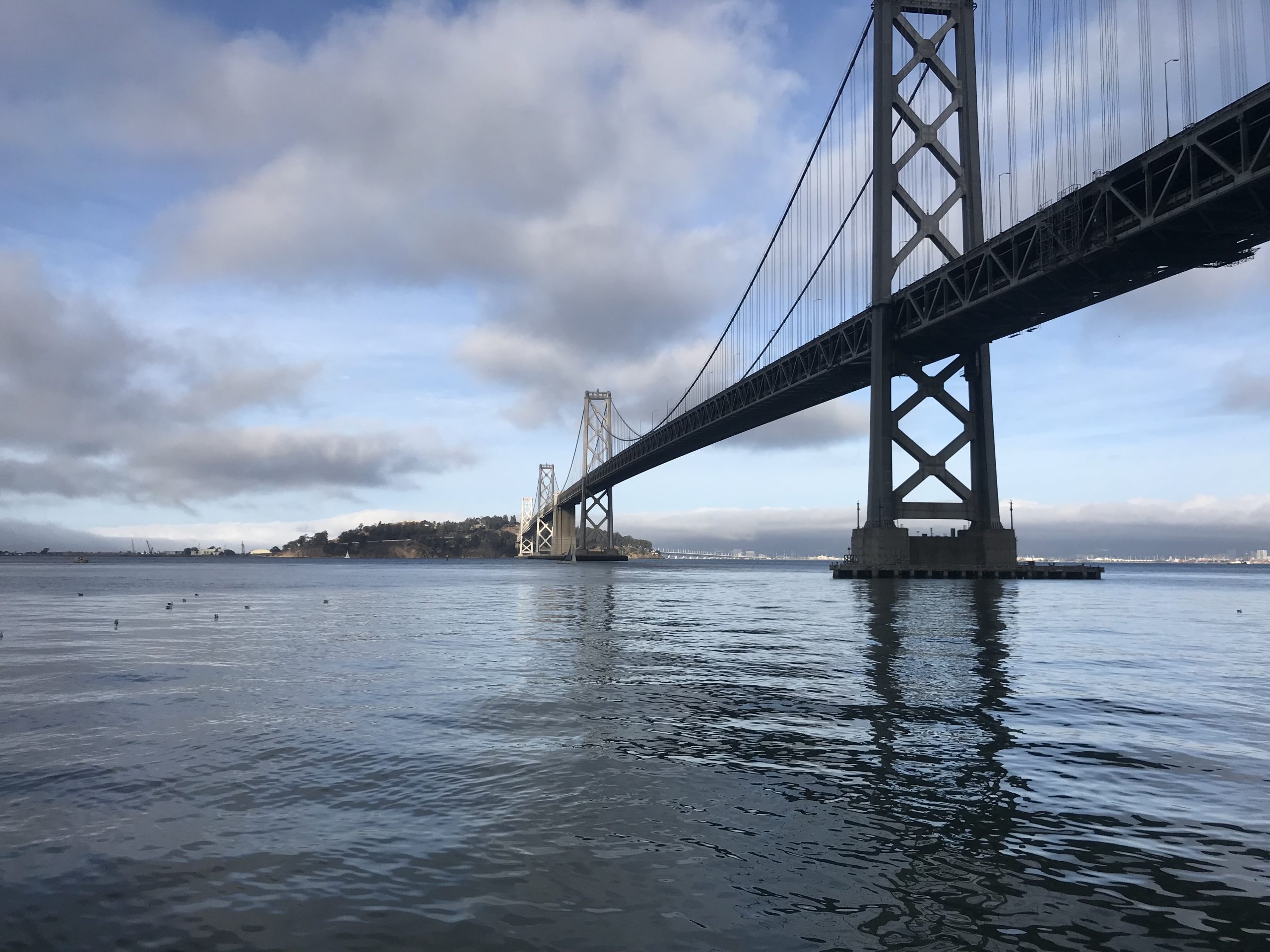Plans
Building on the mandates of SB 379 (2015) and SB 272 (2023), a majority of cities and counties have already started to plan for sea level rise adaptation. While there is positive momentum, the funding landscape for climate has shifted and changed in unexpected ways. This section highlights several examples of how plans for adaptation, as well as funding, are advancing in the Bay.
This page is part of the full Bay Adapt Impact Report 2021-2025 (explore full report here). Click the titles to access resources.
Aligning Local and Regional Plans into a Unified Adaptation Approach
Regional Planning
San Francisco Estuary Partnership’s (SFEP) Estuary Blueprint is the Bay Area’s collective call to stewardship. This vibrant, consensus-driven roadmap brings together over 70 agencies, tribal partners, frontline communities, and scientists to care for the entire San Francisco Bay-Delta Estuary. It is designed to accelerate wetland restoration, champion nature-based climate resilience, streamline green infrastructure, and ensure equitable participation in adaptation and restoration efforts.
The Regionally Advancing Living Shorelines Project in San Francisco Bay, a program of the San Francisco Estuary Institute, prepares the designs, environmental review documentation, and permits needed for 10 new living shoreline climate adaptation projects. In addition to advancing projects, partners also plan to monitor existing living shoreline pilot projects (which will inform design of future projects), prepare guidance for a programmatic permit approach, and advance a framework for collaboration.
Senate Bill 272 requires all coastal cities and counties to develop comprehensive sea level rise adaptation plans by 2034. The law states that the California Coastal Commission (for the outer coast) and BCDC (for the San Francisco Bay shoreline) develop guidelines and ultimately approve or deny plans based on compliance with those guidelines. Jurisdictions that complete approved plans will receive priority for state funding to implement shoreline protection and adaptation projects.
BCDC’s Regional Shoreline Adaptation Plan (RSAP), adopted in response to SB 272, helps pull priorities for a resilient San Francisco Bay shoreline into a region-wide vision. It guides cities and counties in creating Subregional Shoreline Adaptation Plans that align local decisions with regional goals. The RSAP bases local planning on the best available science, links it to funding, prioritizes on-the-ground adaptation projects, and advances innovative policy.
Plan Bay Area 2050+, created by the Metropolitan Transportation Commission/Association of Bay Area Governments, charts a bold, long-term vision for a more equitable, connected, and climate-resilient Bay Area. As the region’s official blueprint for housing, transportation, the economy, and the environment, it elevates adaptation to sea level rise as a pillar of regional growth. The newly developed plan’s Resilient Project List highlights transformative, future-focused infrastructure projects designed to protect vulnerable communities, strengthen critical systems, and safeguard the shoreline.
As part of Plan Bay Area 2050+, the Metropolitan Transportation and the Association of Bay Area Governments expanded their Priority Conservation Area Program in 2024 to include a new Climate Adaptation designation, reflecting the growing need to align conservation with climate resilience. This update supports projects that protect natural and working lands, enhance urban greening, and address climate vulnerabilities, particularly in communities most at risk. In 2024, the Transportation Commission awarded $8.5 million to 13 projects under the refreshed PCA framework.
The 2024 update to the Basin Plan, introduced by the San Francisco Bay Regional Water Quality Control Board, incorporates climate change and sea level rise, empowering regulators, planners, and project partners to align coastal restoration, wetland protection, and flood mitigation with a climate science study. It clarifies permitting and design guidance, enabling projects to move faster, smarter, and more sustainably.
BCDC co-developed the San Francisco Bay Sediment & Soil Beneficial Reuse Action Plan to protect wetlands—one of the most endangered ecosystems in the region. A joint project with the Environmental Protection Agency, Coastal Conservancy, Water Board, San Francisco Estuary Institute, and San Francisco Bay Joint Venture, the plan demonstrates how the region can restore wetlands by reusing sediment and soil more effectively.
Local Planning*
The City of Burlingame comprehensively updated its zoning ordinance in 2021 to provide regulations for the Bayfront, including guidelines to make new development resilient to sea level rise. The new code includes a Bayfront Commercial District, as well as public access, flood protection, and sea level rise performance guidelines.
The Petaluma River Baylands Strategy is a science-based strategy developed by Sonoma Land Trust and partners to restore tidal marshes, wetlands, and uplands in the lower Petaluma River, strengthening flood protection and ecological resilience.
Led by Marin County Flood Control and partners, this strategy outlines phased restoration plans for the Novato Baylands to balance flood risk reduction, habitat enhancement, and cultural resource protection. Key components include hydraulic modeling of the baylands, evaluation of current operations at Pacheco Pond, and collaboration with the Federated Indians of Graton Rancheria to ensure cultural resource considerations are integrated into the planning process.
The Draft San Francisco Waterfront Flood Study combines seismic and climate resilience measures to protect infrastructure, neighborhoods, and historic piers from three feet of sea level rise and 100-year storms. Developed by the Port of San Francisco and U.S. Army Corps of Engineers, and supported by a potential $8.8 billion in federal investment, this effort represents one of the largest flood risk management opportunities in San Francisco’s history.
San Francisco Estuary Institute has completed the Suisun Landscapes project, a multi-year, multi-million-dollar initiative funded by the Delta Stewardship Council and the U.S. Bureau of Reclamation. This project delivers ecological data and tools to support restoration in Suisun Marsh. A related vulnerability analysis for Solano County is underway to develop adaptation strategies by 2026.
A collaborative effort led by the City of San Rafael and Canal Alliance, this project is designed to protect the Canal District—one of Marin County’s most vulnerable communities—from sea level rise, flooding, and storms through community-driven planning.
Funded by Measure AA, the Transportation Authority of Marin’s study, adopted in 2025, evaluates sea level rise threats to Marin’s transportation system. The study builds on previous adaptation planning efforts conducted by Marin County and its regional partners to develop a plan that supports Marin County’s transportation system.
Led by the San Francisco Planning Department in collaboration with local partners, YSNAP centers on racial equity and nature-based solutions to protect Bayview-Hunters Point from 3.5 – 7 feet of sea level rise by 2100, while enhancing ecological and shoreline access. By leveraging community expertise, YSNAP aims to develop a replicable model for climate adaptation in vulnerable urban neighborhoods, positioning Bayview-Hunters Point for future state and federal investment in resilience infrastructure.
*Curated highlights, not an exhaustive list
Figuring Out How To Fund Adaptation
California voters made a generational investment in a safer, more resilient future when they passed Proposition 4, the $10 billion Climate Bond. With $1.2 billion dedicated to coastal resilience, this historic funding will help protect lands, waters, and communities from the accelerating threats of sea level rise and climate disruption.
The Funding and Investment Framework is a joint report published by the Metropolitan Transportation Commission/Association of Bay Area Governments with BCDC. This data-driven and collaborative research project identified near-term needs for sea level rise adaptation and investigated possible funding solutions. It found that while the cost of tackling this regional challenge is significant, failing to adapt would result in a much larger deficit.
After more than a decade of advocacy, the San Francisco Bay Restoration Act was signed into law in December 2022, establishing the Environmental Protection Agency’s San Francisco Bay Geographic Program. Championed by Representative Jackie Speier and the late Senator Dianne Feinstein, the program secured $54.4 million in federal funding for 2023 to support wetland restoration, water quality improvements, and climate adaptation projects across the Bay Area.
San Francisco Bay Restoration Authority (2016)
The Restoration Authority is a regional agency created to fund shoreline projects that will protect, restore, and enhance San Francisco Bay with revenue from the Measure AA parcel tax. The Authority has issued over $159 million in grants for over 40 restoration projects around the Bay. Just between 2022 and 2024, they released over $57 million to fund projects.

